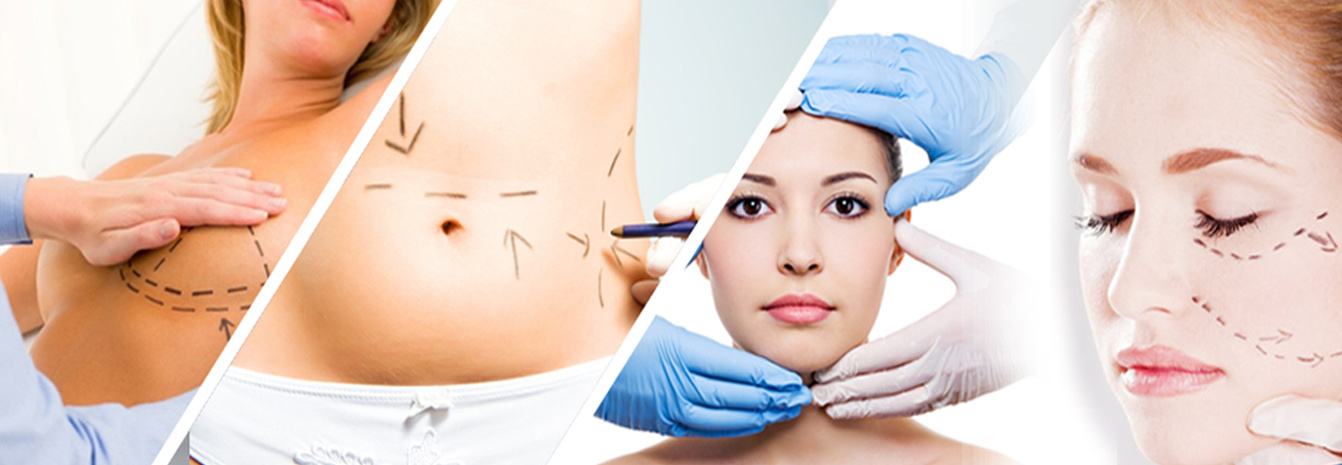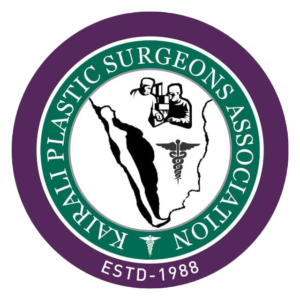
- Abdominal Wall Reconstruction
- Acute Trauma Management
- Breast Reconstruction
- Brachial Plexus and Peripheral Nerve Surgeries
- Burns And Reconstructive Surgeries
- Chest Wall Reconstruction
- Cleft And Craniofacial Surgeries
- Congenital Deformities
- Diabetic Foot & Its Management
- Gender Confirmation Surgeries
- Hand Surgeries
- Head & Neck Reconstruction
- Micro Vascular surgery
- Negative Pressure Wound Therapy
- Pressure Sore And Reconstructive Procedures
- Regenerative Medicine
- Tissue Expansion
CLEFT LIP AND PALATE:
INTRODUCTION:
Cleft surgery has advanced greatly. Currently, the best results are achieved when surgical, orthodontic, speech co-ordinated treatment is continued from infancy through completion of growth. The goal is balanced face, that is attractive, reflecting ‘NO’ deformity.
The prolabium and premaxilla arise from the frontonasal processes and the lateral alveolar segments from the lateral maxillary processes. The primary and secondary palates fuse from the 5th to 8th week of intrauterine life. Arrested fusion at any point accounts for the cleft lips and cleft palates. Incidence of isolated cleft lip is around 1/1000 and cleft palate about 1/1500. The current view of etiology is multi-factorial- a definite hereditary pattern, environmental factors like smoking, alcoholism and teratogens. Sometimes this may be part of syndromes like Pierre-Robin syndrome, Velocardio facial syndrome, Apert’s syndrome, Crouzon’s syndrome etc.
Although lip repair is most common for appearence in patients with cleft lip and palate, palate repair is the most important factor in determining maxillary growth. Maxillary retrusion is often the most obvious cleft feature visually.
PROCEDURES:
Presurgical orthodontics, specifically naso-alveolar moulding (to correct the protruding premaxilla) followed by surgical repair.
Millard’s repair: it is a rotation advancement flap where scar is asked in the filtrum crest and nostril floor. Usually used for unilateral cleft.
Veau’s repair: commonest procedure for bilateral cleft. V-Y mucoperiosteal flap raised till soft palate. The flap is retroposed as a whole and thus palate is lengthened.
Complete release of the abnormally placed soft tissue structures off the lateral lip segment and alar bases, and continuity of the orbicularis oris muscle is the key. Primary Rhinoplasty along with lip repair is the norm.
Timing of surgery is as per the rule of 10’s- cleft lip at 10weeks, cleft palate at 10 months, adequate weight and hemoglobin 10gm/dl. Secondary procedures like rhinoplasty and segmental LeFort osteotomy are done at skeletal maturity.
FACIAL CLEFT:
INTRODUCTION:
Facial clefts are rare malformations with incidence around 1:100,000 line births. Although shocking for the parents and socially stigmatizing, providentially now, treatment options do exist, to achieve near normal aesthesis.
Craniofacial clefts were classified anatomically by Paul Tessier on a numerical scheme, centered on the orbit. This classification includes numbered clefts from 0 (midline cleft of lip and nose) to 14 (midline cleft at cranium, including hypertelorism and fronto-ethmoidal encephalocele). Clefts 0 to 7 are facial clefts and clefts 8-14 are cranial vault clefts. Each cleft has unique soft tissue and bone lines. Also, the facial and cranial clefts coincide such that the sum of clefts is always 14 (eg 0/14, 5/9, 3/8etc.)
- No 1,2 and 3 are localsied over the Cupid’s bow
- No 4, and 5 are oro-ocular clefts
- No 7 cleft is transversely oriented, presenting as macrostomis.
- No 6- cleft affects zygomaticco- maxillary sutures
- No 8 zygomatic suture line
PROCEDURE:
Each defect requires treatment individualized to the patient. There may be associated other organ malformations and thus a thorough pre-operative work –up needs to be done. Psychological counseling for the parents and detailed radiological evaluation (CT for bony anatomy and MRI for soft tissue anatomy especially if encephalocele is suspected).
Planned surgery is the norm except in two situations- intubation and tracheotomy for the child born with obstruction of the upper airway. Similarly in facial clefts with palpebral region affected, causing cornea exposure, emergent surgeries to prevent corneal ulceration. Interference early on to dento-bony complex can be deleterious.
The surgical principle is restoration of soft tissues seeking the re-establishment of normal anatomic continuity of each tissue. Preservation of the ocular globe, canthopexies, cleft rhinoplasty, a variety of skin flaps and bone grafting are the basic procedures involved.
RISKS
- Bleeding
- Infection
- Delayed healing of wounds
- Residual irregularities and asymmetries
- Multiple procedures required to achieve aesthesis
For surgeries for cleft lip only- expressed breast milk feeding may be initiated within 24hrs with a spoon and bowl or syringe.
For surgeries after cleft palate- liquids may be started after 2-3days in an upright position only, with spoon and bowl or syringe.
It usually takes 3-4 weeks for wounds to heal. Care should be taken that the child is not allowed to suck or touch the lip or wounds during this time.
If left untreated, it can lead to developmental problems with feeding, hearing, dentition and speech
